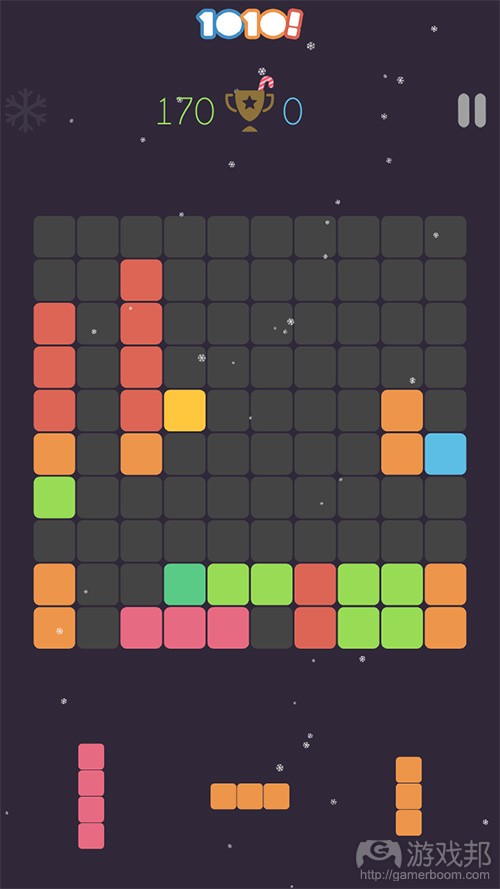听Alex Willink分享独立游戏工作室成功的秘诀
作者:Mark Rosner
Gram Games是最成功的独立游戏工作室之一。他们的休闲游戏《1010!》,《Merged!》和《Six!》都在世界范围内吸引了广大注意并共创造了1亿多的下载量。最近我和该公司的战略合作伙伴关系负责人Alexander Willink共同讨论了该公司的盈利策略,VR以及他们用于培养开发者社区所使用的前瞻性策略。
从盈利上来看,你们的大多数收益都是来自广告。那你认为完全依赖于广告去执行真正成功的项目的秘诀是什么?
我们的大多数收益是来自插页式广告和标准的横幅广告的结合。为了做好这些,你就需要去衡量展现给用户的广告数量。太多广告会导致游戏用户留存的大大下滑,但如果广告数量太少你便难以最大化地获取盈利。对于休闲游戏来说,他们可以遵循的公式其实很简单:在较大的设备中,肖像游戏总是可以在游戏玩法期间轻松地呈现横幅广告,并且在游戏最后可以呈现插页广告。这里的一个有效技巧便是面向全新用户缓慢呈现插页广告,这能够避免吓跑或动摇这些用户。
你可以和刚刚起步的独立开发者分享你觉得最重要建议吗?
在你的核心游戏循环中整合盈利元素。清楚如何将其带进用户体验中。游戏内部盈利其实是一种联系,你需要理解它与用户之间的关系。如果用户觉得游戏很有趣,他们便会接受一定程度的游戏内部广告。我们对创造游戏充满热情且希望提供给用户免费游戏内容,但我们同时也需要采取一些盈利方式才能确保为用户继续创造高质量的游戏。
现在VR开始进入一些手机游戏体验,你们是否考虑也去拥抱这一媒体?你是否认为这将对游戏盈利起到帮助。
VR是一个非常让人兴奋的平台,这是游戏体验中一种前所未有的新方式。但也因为这是一种新平台,所以具有更大的风险性,并且对于现在的我们来说有点不切实际,但这种情况也有可能发生变化。我们可以将盈利方式整合到任何可能吸引用户注意的地方,VR便是如此。它具有绝对的潜力,但是我们需要先观察用户对它的适应度。
我们都知道Gram Games提供给了开发社区很大的回馈并致力于培养当地的人才,例如编程马拉松和2Tons Accelerator Program。你们从这一行动中获得了怎样的结果?
Gram Games是一家以独立开发起步为傲的工作室,所以我们觉得有责任继续去推进这种类型的开发。我们的2Tons Program便不断获得成功。2Tons是Gram Games面向独立游戏开发者所进行的支持与开发活动(游戏邦注:现在主要在英国和土耳其)。我们希望提供给那些想要在手机游戏世界留下自己印记的人提供帮助。
2Tones的参与者可以使用Gram Games所提供的全方的服务与支持以及来自我们团队的专家意见。我们尝试着始终陪在这些独立开发者身旁,不仅帮助他们解决基本的技术问题,也将在设计和开发过程中提供给他们帮助。而最棒的地方在于,我们不求任何财务回报,即我们只希望我们身边的独立游戏开发者也能够获得成功。
最近我们刚发布了一个名为The 22% Project的活动,即致力于将更多女性带进游戏开发中。该活动将超过60名女性吸引到了我们的伊斯坦布尔工作室,他们将在此专注于特定的研讨会与交流中。而对于2Tones,我们也希望能够带给更多觉得自己不可能在游戏产业中获得成功的人们鼓励与帮助。
(本文为游戏邦/gamerboom.com编译,拒绝任何不保留版权的转发,如需转载请联系:游戏邦)
Secrets to indie success: a conversation with Alex Willink, Head of Strategic Partnerships at Gram Games
by Mark Rosner
Gram Games is one of the most successful indie studios out there. Its casual games 1010!, Merged!, and Six! have been worldwide hits to the tune of a collective 100 million downloads. I recently sat down with Alexander Willink, Head of Strategic Partnerships at Gram, to talk about the company’s monetization strategy, VR, and forward thinking strategies the company has deployed to cultivate the developer community.
In terms of monetization, most of your revenues comes from ads. What do you think the tricks are to pulling off a successful campaign that relies exclusively on ads?
The majority of our revenue comes from a mix of interstitials and standard banner ads. To get this right, you need to pace the volume of ads displayed to the users. Too many ads, and the retention will drop off a cliff, not enough and you won’t be monetising at the optimum rate. For casual games, the formula is pretty simple: portrait games can easily justify a banner during gameplay on larger devices and there should be an interstitial at the end of a game. A great trick is to pace interstitials on newly found users to slowly introduce the interstitials, so as to not overwhelm or agitate the user.
What is the most important tip you would share with indie devs just starting out?
Build monetisation into your core game loop. Understand how to make it a part of the user experience. When it comes down to it, in-gaming monetisation is a relationship and understanding you have with your users. If they feel the game is fun, they will appreciate a certain level of in-game advertising. We are passionate about making games and love to offer them free, but there needs to be some form of monetisation for us to continue producing world class games.
With VR now starting to creep into some mobile experiences, do you consider working on that medium? Do you think it has great potential for monetization with games?
VR is an extremely exciting platform that presents incredible new ways to add to the gaming experience. However, as it is a new platform, it’s risky to place your bets on one particular device and so it doesn’t make sense for us to focus on now, but that could change. Monetisation can be built into anything that grabs a user’s attention — VR certainly does that. It has great potential but first we need to see user adoption.
Gram Games has a great reputation for giving back to the dev community and fostering local talent, as with hackathons and 2Tons Accelerator Program. What are some of the results you’ve seen from that priority?
Gram Games is a studio that prides itself on having grown out of indie development, and so we feel a certain responsibility to continue to foster that sort of development. Our 2Tons Program continues to be a huge success. For those who haven’t heard of it – the 2Tons is Gram Games’ support and development program for indie game developers (in England and Turkey, for now). We want to provide support to those who, like us, want to make a mark in the mobile gaming world.
Participation in the 2Tons gives indie gamers access to the full range of services and support Gram Games can provide, as well as to our incredible team’s expertise. We try to be there alongside these indie developers, from solving base-level technical problems, all the way through the design and development process. And the best part? We don’t expect any financial commitment — all we hope for is the success of the indie gamers around us.
We also recently launched a program called The 22% Project, aimed at getting more women into game development. The workshop will bring in over sixty women to our Istanbul office, and will engage them in topic specific workshops and chats over the course of the day. As with 2Tons, we really hope that this will help encourage a segment of gamers or game producers that would perhaps feel otherwise disenfranchised to succeed in the gaming industry.(source:gamasutra)








































 闽公网安备35020302001549号
闽公网安备35020302001549号